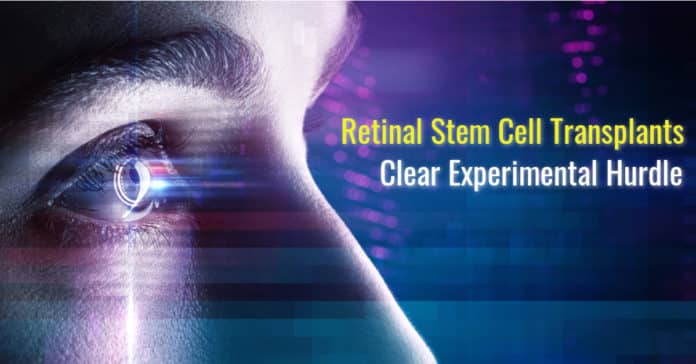Retinal Stem Cell Transplants Clear Experimental Hurdle
Blindness is a condition that proves incurable most of the time. Researchers have been looking for alternatives that would help the blind to see the light and color. Normal vision is maintained by RPE (Retinal Pigment Epithelium), present in the retina and consists of a pigmented cells layer. Nearly 200 million people are affected by macular degeneration, which occurs due to RPE dysfunction. A study by Liu et al. has succeeded in the first step to validating the blindness treatment approach, which is published in Stem Cell Reports. It involves transplanting retinal cells from a human eye (adult) into monkey eyes.
Adult eyes from a donated human cadaver were used to derive retinal stem cells grown into RPE cells and transplanted into monkey eyes, where they restored the RPE cell population. These cells can act as an unlimited RPE (human) source that may be compatible with the donor cells. Using this approach, the retinal stem cell (-derived) RPE transplants were tested for feasibility and safety in non-human primates in this study. Scientists discovered the stable integration of transplanted RPE patches, which lasted for not less than 3 months without major adverse effects. Moreover, regular photoreceptor function was supported by the RPE derived from stem cells by taking over monkey RPE functions. Retinal scarring was, fortunately, not one of the outcomes.
This study validated the feasibility of treating macular degeneration by replacing the defective RPE with transplant RPE. However, this approach needs further validation by progressing research on it. One method that requires experimental evidence includes vision restoration in diseased non-human primates using the adult retinal stem cell transplants of RPE. This will further proceed to clinical trials with human subjects. The approach will be validated by an international collaboration between Eye Clinic Sulzbach in Germany, Singapore Eye Research, Institute of Molecular Cell Biology (A*STAR), National University of Singapore, and Icahn School of Medicine at Mount Sinai (New York).



